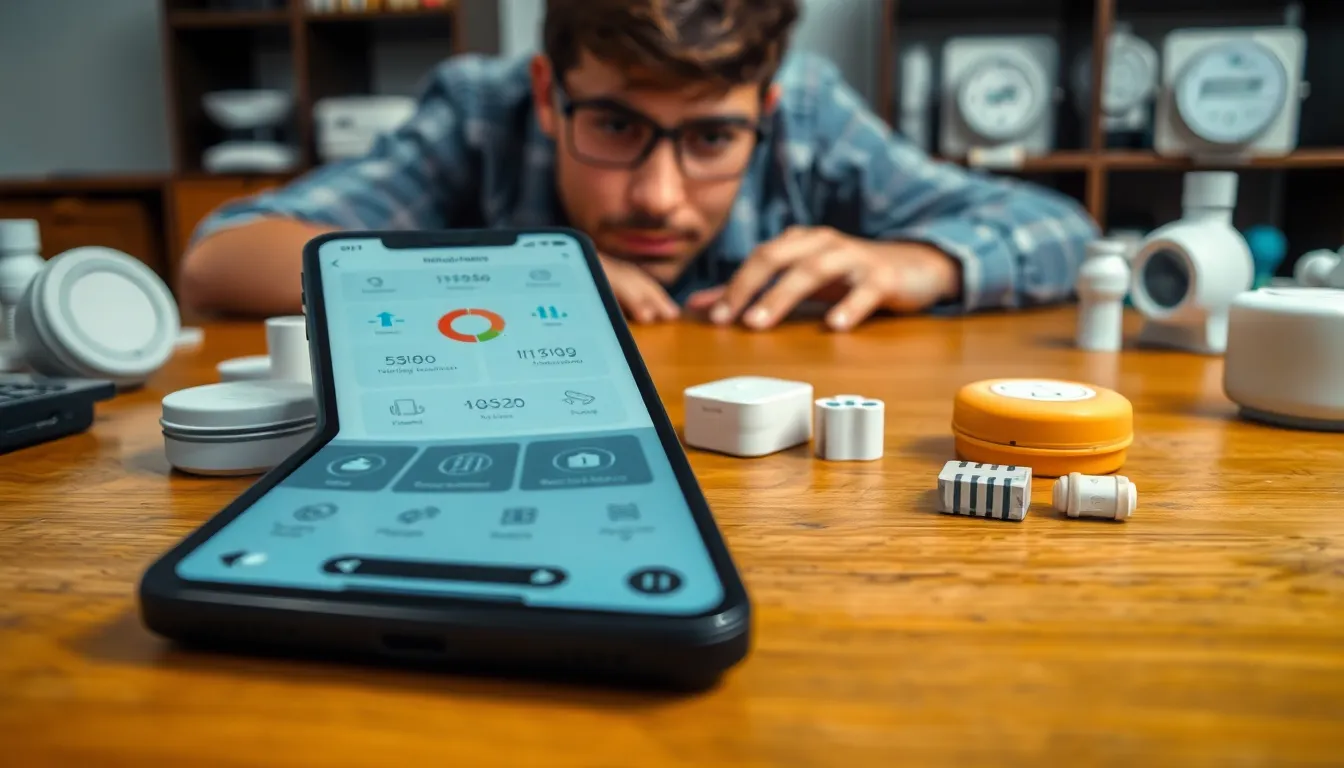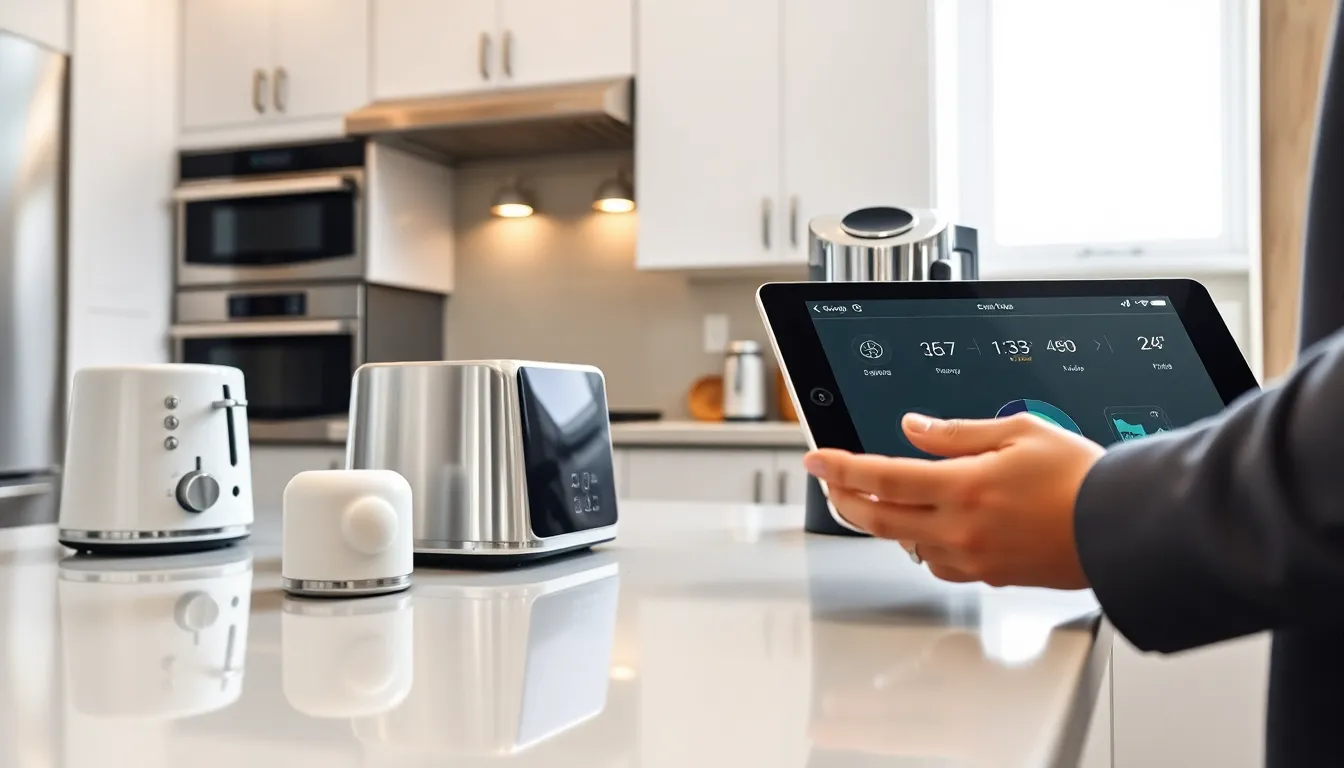In a world where your fridge can text you when you’re out of milk, managing Internet of Things (IoT) devices has never been more crucial—or more entertaining. The IoT device management protocol is like the unsung hero of the tech realm, ensuring that all those smart gadgets play nice together. Without it, your toaster might just decide to start a rebellion against your coffee maker.
Table of Contents
ToggleOverview of IoT Device Management Protocol
IoT device management protocols play a critical role in the efficient operation of interconnected smart devices. These protocols facilitate communication and coordination among diverse devices within an IoT ecosystem.
Definition of IoT Device Management
IoT device management refers to the processes and protocols that ensure the proper administration of connected devices. It encompasses tasks such as onboarding, configuration, monitoring, and security management. Through this framework, organizations can maintain efficient control over device performance and seamless updates. Every device deployed in an IoT network requires effective management to ensure functionality and security.
Importance of Device Management in IoT
Device management holds significant importance in the IoT landscape. Proper management enhances device lifecycle management by streamlining firmware updates and troubleshooting. Efficient device management reduces operational costs associated with maintenance, as identified issues can be resolved proactively. Furthermore, it guarantees data integrity and security, preventing unauthorized access to sensitive information. Effective management empowers organizations to optimize performance and reliability across their networks, ensuring devices operate as intended.
Key Protocols for IoT Device Management

Several protocols facilitate effective management of IoT devices, ensuring seamless communication and functionality among diverse systems.
Lightweight M2M (LwM2M)
Lightweight M2M, often referred to as LwM2M, focuses on managing low-power devices, particularly in remote and challenging environments. This protocol operates over a constrained network, optimizing data usage while enabling vital device management functions. Key features include device discovery, remote configuration, and firmware updates. LwM2M employs the CoAP protocol for efficient communication, which minimizes resource consumption. Organizations favor LwM2M for its simplicity and effectiveness, making it ideal for applications like smart meters and environmental sensors.
Device Management using OMA-DM
OMA-DM, or Open Mobile Alliance Device Management, offers a comprehensive framework for managing mobile and IoT devices. This protocol allows for remote management across heterogeneous devices, helping administrators streamline operations. OMA-DM supports functionalities like monitoring device status, applying configurations, and executing software updates. Its extensibility ensures compatibility with various platforms, making OMA-DM a preferred choice for mobile operators and manufacturers. Organizations benefit from OMA-DM’s robust security features, safeguarding devices against potential vulnerabilities.
Challenges in IoT Device Management
Managing IoT devices presents several challenges. Two primary issues include security concerns and scalability.
Security Concerns
Security is a significant challenge in IoT device management. Many connected devices lack essential security features, making them vulnerable to attacks. High-profile breaches have highlighted weaknesses in protocols. Data integrity remains at risk, especially when sensitive information transfers between devices. Ensuring secure communication channels and protecting devices from unauthorized access requires ongoing efforts. Regular updates and patches can enhance security but may introduce new complexities in management.
Scalability Issues
Scalability poses another challenge for IoT device management. As organizations add more devices, managing them effectively becomes increasingly complicated. Systems designed for a limited number may struggle when overwhelmed with excess devices. Performance issues can arise when networks fail to support thousands of connected gadgets simultaneously. Solutions must accommodate growth while maintaining efficiency. Prioritizing protocols that facilitate large-scale management is essential for sustaining device performance and reliability.
Best Practices for Implementing IoT Device Management Protocols
Implementing IoT device management protocols requires strategic planning. Following best practices enhances network performance and security.
Choosing the Right Protocol
Selecting the appropriate protocol remains crucial for effective device management. Factors like device capabilities, energy consumption, and communication requirements influence this choice. For instance, Lightweight M2M excels with low-power devices due to its efficient resource usage. OMA-DM, on the other hand, suits diverse systems with its robust remote management capabilities. Organizations should evaluate each protocol’s features against their specific needs. This ensures compatibility and maximizes operational efficiencies.
Ensuring Data Integrity and Security
Maintaining data integrity and security stands as a top priority. Vulnerabilities in IoT devices can lead to data breaches and unauthorized access. Employing encryption strategies protects sensitive information during transmission. Additionally, regular firmware updates help mitigate risks by addressing known security flaws. Implementing secure communication channels reduces exposure to attacks. Organizations must adopt comprehensive security policies that encompass all connected devices. By prioritizing these measures, they enhance overall network safety and reliability.
Effective IoT device management is crucial for optimizing the performance and security of interconnected devices. By implementing robust protocols like LwM2M and OMA-DM, organizations can streamline operations and enhance communication among their smart devices. Addressing challenges such as security vulnerabilities and scalability ensures that networks remain efficient as they grow.
Adopting best practices and strategic planning not only improves device lifecycle management but also safeguards data integrity. As the IoT landscape continues to evolve, prioritizing effective device management will empower organizations to harness the full potential of their connected technologies. Embracing these protocols and practices positions businesses for success in a rapidly advancing digital world.




